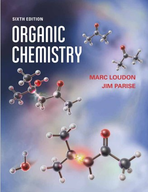(S)-(1)-Aspartic acid is one of the naturally occurring a-amino acids. HO HO NH3 H O O
Chapter 6, Problem 6.43(choose chapter or problem)
(S)-(1)-Aspartic acid is one of the naturally occurring a-amino acids. HO HO NH3 H O O Cl + (S)-(+)-aspartic acid (as it exists in HCl solution) Over time in the environment or in aqueous solution, aspartic acid can undergo racemization very slowly (by a process that we wont consider here). The racemization of aspartic acid occurs at a known rate that can be used to date tissue samples in forensic investigations. The rate of racemization in skull samples follows the equation lnS 1 1 r 1 2 rD 5 kt where k 5 6.24 3 104 yr1 and t 5 age of the sample in years. In this equation, r is the ratio of (R)-(2)- and (S)-(1)- aspartic acid. The local coroners office, knowing your expertise in organic chemistry, comes to you with an old skull sample that was excavated from a building site. You isolate partially racemized aspartic acid from the sample and find (by chiral chromatography) that the sample contains 6% of the (R)-(2)-enantiomer and 94% of the (S)-(1)-enantiomer. (a) How old is the skull sample? (b) What is the enantiomeric excess of the (S)-(1)-enantiomer in the sample? (c) If (S)-(1)-aspartic acid has a specific rotation [a] 20 D 5 124.5 degrees mL g1 dm1 in 6 M aqueous HCl solution, what is the observed rotation of 100 mg of the forensic (partially racemized) sample in 10 mL of 6 M aqueous HCl?
Unfortunately, we don't have that question answered yet. But you can get it answered in just 5 hours by Logging in or Becoming a subscriber.
Becoming a subscriber
Or look for another answer
